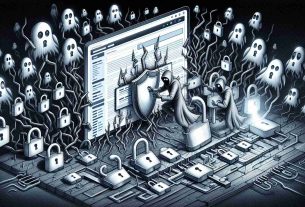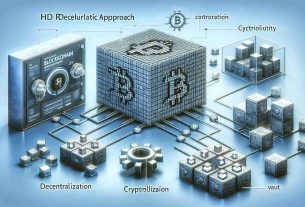Artists find a new dawn as technological innovation collides with creativity. Kim Van Deun, a fantasy illustrator, envisioned a realm where AI would not encroach on human artistry. Glitches in the system give birth to tools that shield artistic identities from the all-seeing eyes of algorithms.
Glaze and Nightshade emerge as the unsung heroes of the digital canvas, silently protecting the integrity of online artworks. These tools, born from a union of minds, epitomize a rebellion against corporate dominance in the art sphere.
Karla Ortiz, a digital artist, dreams of a shield that shrouds her creations in a cloak of absurdity, transforming infringers’ desires into a cascade of randomness. From this whimsical idea springs a movement led by Ben Zhao, a beacon in the fight against AI exploitation of human creativity.
As Glaze and Nightshade gain traction, a shift in power dynamics becomes palpable. Artists like Ortiz can now share their work on a platform where their voices are not drowned out by digital impostors. A glimmer of hope emerges—a hope that echoes Zhao’s fervent belief in restoring value to human expression.
The journey ahead is fraught with challenges, as skeptics question the efficacy of these guardian tools. However, the vision remains unwavering—an evolution where creators reclaim their narratives and redefine the rules of engagement in a digital world.
Additional Facts:
– Technologies such as virtual reality (VR) and augmented reality (AR) are also being used by artists to enhance their creative expression.
– Crowdfunding platforms like Kickstarter and Patreon have empowered artists to directly connect with their audience and receive financial support for their projects.
– Artistic collaboration across borders has been made more accessible through online platforms, allowing artists from different parts of the world to work together on innovative projects.
Important Questions:
1. How can artists strike a balance between utilizing technology for creative purposes and preserving the authenticity of traditional artistic practices?
2. What are the ethical considerations involved in the battle against AI exploitation of human creativity?
3. How can artists ensure that their work remains protected and respected in the increasingly digital realm?
Key Challenges:
– Ensuring the effectiveness and reliability of the tools and technologies designed to empower artists against AI infringement.
– Navigating the legal landscape surrounding intellectual property rights and copyright protection in the digital age.
– Overcoming resistance and skepticism from traditionalists who may be wary of embracing technological advancements in the artistic field.
Advantages:
– Empowering artists to assert control over their creative output and maintain the integrity of their work.
– Facilitating greater collaboration and networking opportunities within the artistic community.
– Fostering innovation and pushing the boundaries of artistic expression through the fusion of technology and creativity.
Disadvantages:
– Risks of over-reliance on technology, potentially diluting the emotional and personal elements in artistic creations.
– Possible infringement on privacy and data security issues when utilizing digital tools and platforms.
– The digital divide, where artists without access to advanced technologies may face barriers in participating fully in the art world’s digital landscape.
Suggested Related Links:
– ArtNews
– Art of Visuals
– The Art Newspaper



